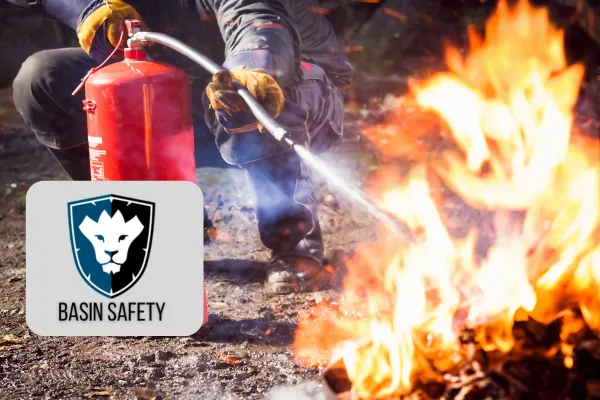
How Can You Effectively Identify Workplace Hazards?
Understanding where hazards exist is the first step in creating a safer work environment. Workplace safety programsrely on proactive hazard identification in the workplace to prevent injuries and ensure compliance with OSHA hazard communication requirements.
A comprehensive risk assessment and hazard prevention plan should include regular workplace inspections, employee safety training, and clear workplace hazard labeling. By using workplace hazard signs and labels, businesses can effectively communicate risks and reduce accidents.
What Are the Best Strategies for Hazard Mitigation?
Once hazards have been identified, employers must take immediate steps to mitigate risks. This involves:
Implementing workplace safety regulations that align with OSHA standards.
Enforcing the use of personal protective equipment (PPE) tailored to the specific hazards.
Ensuring PPE selection and implementation meets industry safety requirements.
Establishing emergency hazard response procedures for incidents.
Mitigation strategies must be regularly updated to reflect changes in the workplace environment and new regulatory guidelines.
Why Is PPE Essential for Hazard Control?
Even with strong safety measures in place, some workplace hazards cannot be entirely eliminated. That’s where PPE compliance guidelines come into play. Proper PPE training for employees ensures that protective gear is worn correctly, reducing exposure to hazards.
Employers must:
Provide PPE that meets industrial PPE standards.
Conduct routine inspections to maintain proper PPE usage.
Train employees on OSHA PPE guidelines and safety protocols for hazardous environments.
By enforcing PPE best practices for employees, businesses can significantly lower workplace injury rates.
How Does Hazard Communication Improve Safety?
Clear industrial safety communication is essential for hazard mitigation. Effective safety communication includes:
Safety symbols in the workplace that indicate potential risks.
Workplace hazard labeling to ensure employees recognize dangers.
Safety signage compliance to meet OSHA hazard communication requirements.
A strong hazard communication plan ensures that employees understand how to work safely in potentially dangerous environments.
What Role Does Regulatory Compliance Play in Workplace Safety?
Following regulatory safety compliance standards is not just a legal requirement—it’s a key component of maintaining a safe workplace. Employers must:
Stay up-to-date with workplace safety regulations.
Ensure SDS compliance for chemical safety.
Maintain thorough documentation of hazard signage requirements and PPE policies.
Regulatory compliance reduces liability, protects employees, and strengthens workplace safety culture.
Ensure Workplace Safety with Basin Safety
Don't leave safety to chance. Basin Safety provides comprehensive workplace safety programs, hazard communication standards, and PPE training for employees to help businesses maintain compliance and protect their workforce.
Don't wait for an accident to highlight your safety gaps. Contact us today or visit our website to strengthen your safety protocols and protect your team.
Contact Us:
(701) 572-8140
www.basinsafetyus.com
Archives
Categories
Benzene Testing
Bloodborne Pathogens
Breathing Air Systems
Certification Process
Confined Space Attendants
Confined Spaces
Construction Equipment Operators
Electrical
Environmental Compliance
Excavation and Trenching
Fire Extinguisher Training
Forklift Operator
Hazcom Workplace Safety
HAZWOPER
Hearing Protection Training
Heavy Equipment
Hydrogen Sulfide
Lone Worker
Lone Worker Solutions App
Monitoring
Oil and Gas
Oil Drilling
Online Training Confined Spaces
Permit-required
PPE
Radiation Safety
Rescue Equipment
Rescue Team
Safety Consultants
Safety Devices
Safety Tracking
Safety Training
Site Inspections
Training 1
Training 2
Training 3
Training 4
Training 5
Uncategorized
Virtual Access to Safety Data
Waste Haulers
Confined Space Rescue
VISIT US
4401 16th Avenue West Williston, ND 58801.
2740 Sims Street Suite B Dickinson , ND 58601
(701) 572-8140

BASIN SAFETY CONSULTING CORPORATION
Basin Safety believes in shared excellence. We are accountable to our core values:
● Pioneering Excellence Everyday
● Supporting each other to put customers first
● Asking the right questions, to ensure the greatest results.
Basin Safety Consulting © 2025. All rights reserved.
Powered By Upleveled Strategies

BASIN SAFETY CONSULTING CORPORATION
Basin Safety believes in shared excellence. We are accountable to our core values:
● Pioneering Excellence Everyday
● Supporting each other to put customers first
● Asking the right questions, to ensure the greatest results.
VISIT US
4401 16th Avenue West Williston, ND 58801.
2740 Sims Street Suite B Dickinson , ND 58601
(701) 572-8140
Basin Safety Consulting © 2025. All rights reserved.
Powered By Upleveled Strategies

